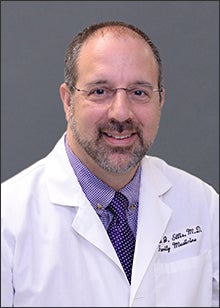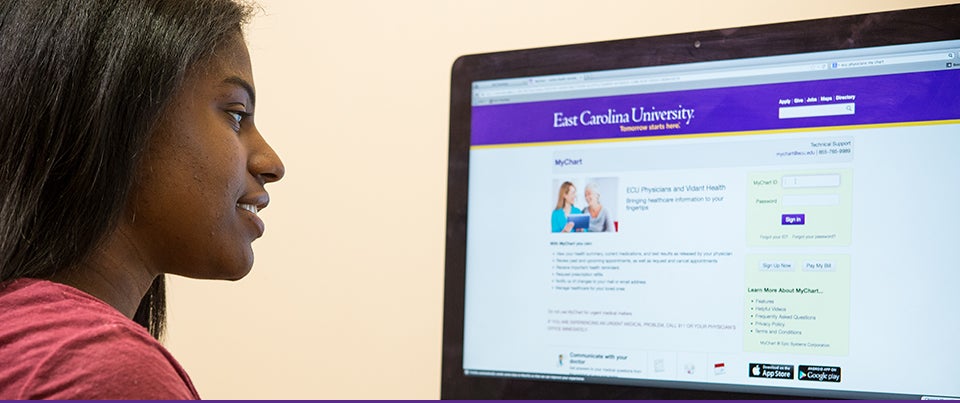PAPERLESS PRACTICE
ECU Physicians recognized for exceptional use of digital records
The clinical practice of the Brody School of Medicine at East Carolina University has been recognized for significantly improving patient care through the use of their electronic medical record system.
ECU Physicians was recently awarded nearly $2.2 million by the federal government for demonstrating “meaningful use” of their EMR system during 2014. This designation means that every eligible ECU health care provider exceeded dozens of specific quality measures set forth by the Centers for Medicare & Medicaid Services, the agency that governs the use of digital health records in the U.S.
“This demonstrates that we’re using our EMR to its fullest potential to achieve greater transparency with the patient,” said Dr. Tommy Ellis, chief medical informatics officer for ECU Physicians.

Dr. Tommy Ellis
“It means we’re communicating better, which leads to better data collection, which ultimately leads to better health outcomes,” Ellis said. “The only way we’re going to improve the health status of the citizens of eastern North Carolina is to improve how we collect health data from individual patients.”
Ellis said the $2.2 million award will be used to offset the cost of EMR implementation throughout ECU Physicians. This payment brings the total amount of federal stimulus payments earned by ECU Physicians to just over $8.6 million since the Electronic Health Records Incentive Programs were launched by the U.S. government in 2011. The goal of these programs is to encourage medical practices and hospitals serving Medicare and Medicaid patients to convert from paper charts to digital records.
“What we’re hearing from our colleagues elsewhere is that we’re the only organization in North Carolina to achieve this level of success with our electronic medical records system,” Ellis said. “Despite the initial headaches involved with implementing an EMR, our people stepped up to the task and have made it second-nature.”
He said the effective use of electronic medical records immediately improves the quality and safety of patient care. It empowers patients and their family members to take an active role in managing their own health because they have easy access to real-time information including lab results and treatment plans.
It also increases efficiency, Ellis said. When a patient’s data can be shared accurately and quickly between doctors and hospitals, it eliminates unnecessary duplication of tests and procedures, helps providers diagnose problems earlier and improves the coordination of care.
The ultimate goal of electronic medical records is better clinical outcomes and improved population health, Ellis said.
“This ‘meaningful use’ achievement represents a lot of hard work by many people,” said Dr. Nicholas Benson, medical director of ECU Physicians. “It validates that ECU Physicians is making the most out of our investment in EMR.”
Ellis said ECU Physicians is on track to earn the maximum incentive for 2015, and that the free online patient portal, MyChart, will play an increasingly important role to that end in coming months.
“It’s another way to improve the patient’s access to their health care provider, which strengthens the patient-provider relationship,” Ellis said. “Engaged, informed people take better care of themselves, which lowers health care costs.”
He explained that MyChart allows patients to send and receive secure messages to their health care team from their computer, tablet or smartphone, to view their test results and medication lists, to request appointments and refill prescriptions and to receive reminders about preventive and health maintenance issues like flu shots and mammograms.
More than 26,000 ECU Physicians patients are using MyChart, with an average of more than 50 new users signing up daily.
Today about three-fourths of the country’s medical practices and hospitals use electronic records, motivated in part by the federal health law tying Medicare reimbursements to how successful providers are at getting and keeping patients healthy. At the end of 2014, all ECU clinics were using the practice’s current EMR, created by the software company Epic.
Although it’s difficult to quantify the dollar amount saved by “going paperless,” Ellis said, “theoretically, the quicker you can get your hands on more information, the better decisions you can make, and in a more timely manner – which is cost-saving for patients and for health systems.”
